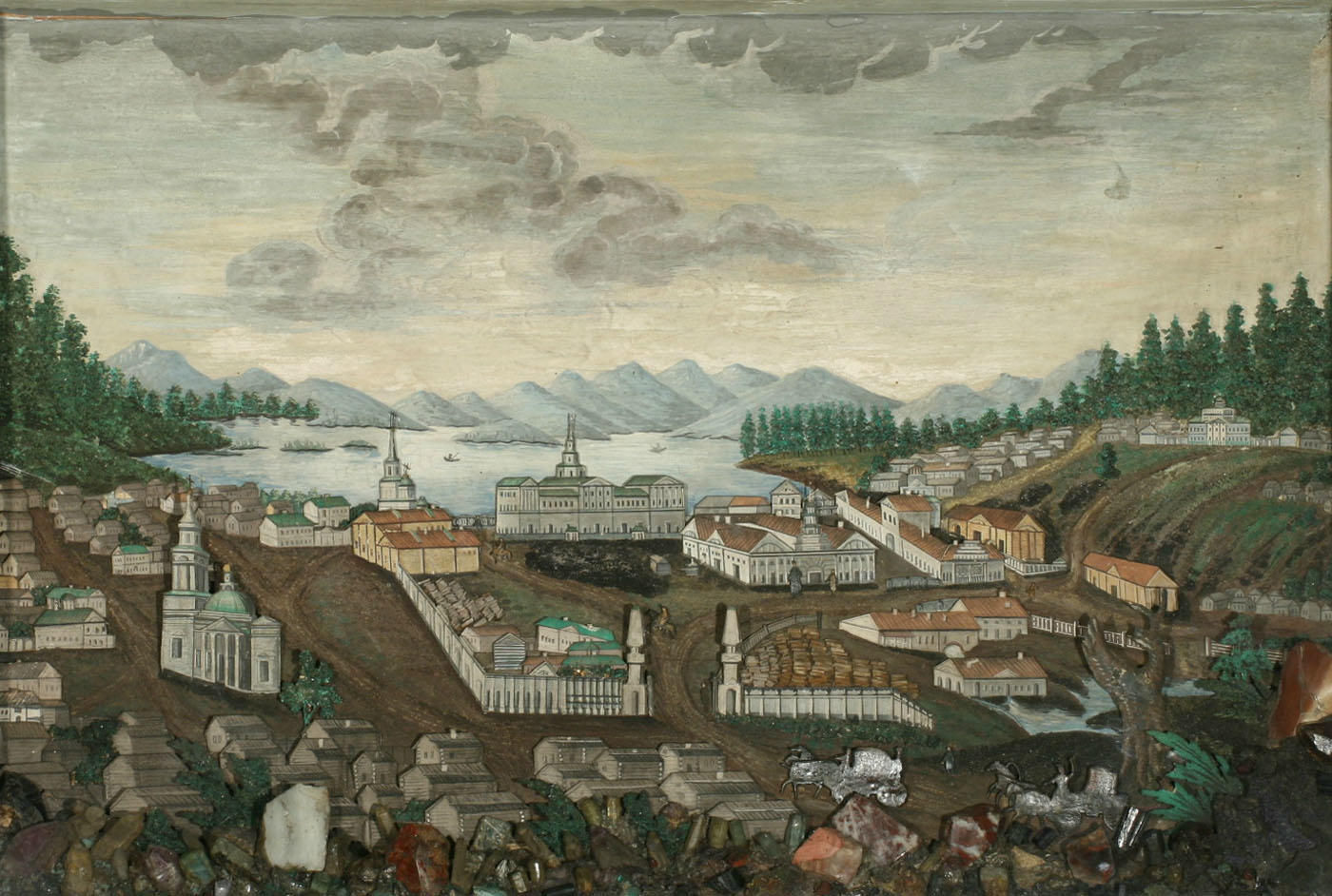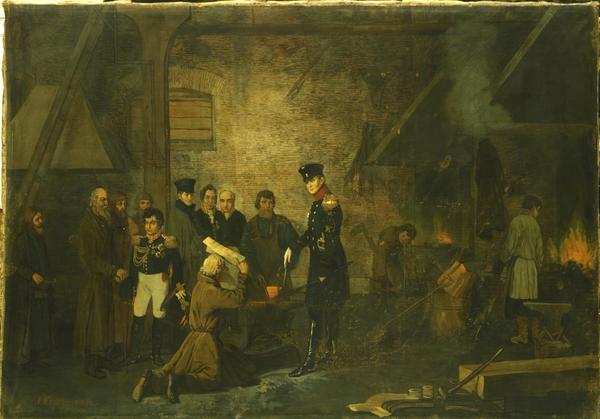Rumour has it that the painting was made as a gift for a member of the Russian royal family. One version says that it was made for Emperor Alexander I, who visited the Urals in 1824. According to the other one it was intended for Crown Prince (Tsesarevich) Alexander, who visited the Yekaterinburg area in 1837. However, the gift had never been given to either of its probable addressees. The picture hung in the office of Verkh-Isetsky metallurgical plant manager Egor Kitaev. His descendants subsequently donated the painting to the museum.
Panoramic View of Verkh-Isetsky Plant
Время создания
1820s
Размер
65,6x86,8x17 cm
65.6х86.8х17 cm
65.6х86.8х17 cm
Техника
Oil on canvas, precious and semiprecious stones
1
Открыть в приложении#6
Panoramic View of Verkh-Isetsky Plant
#7
#8
The Panoramic View of Verkh-Isetsky Plant was created by artist Popov in the 1820s. The canvas was made using oil paint and the artist set the lower part of it with gemstones and minerals, for which the Urals are famous, so the panorama was called a gemstone painting. Among the stones used were malachite, emerald, crystal, tourmaline, agate, red manganese and samples of various ores. In the painting, the author showed the settlement as seen from Nagornaya (Hill) Street, one of the oldest streets of the Verkh-Isetsky Plant settlement. The street took its name from Nikolskaya Hill, where its eastern part was located. The hill is seen in the painting and it is now part of Yekaterinburg.
#9
The centre of the panorama features Verkh-Isetsky pond with the plant’s administrative building on its edge. Towering behind the pond are the Ural Mountains. In the lower part of the painting the author pictured a royal carriage entering the plant site.
#5
Korzukhin A.I. Stay of Alexander I at the Novoisetsky Plant in 1824. 1877 Russian Museum.
Verkh-Isetsky Plant was founded in 1726. It was initially a state-owned enterprise, but in 1753 Empress Catherine I gave it as a gift to her favourite — count Mikhail Vorontsov. The count almost immediately sold his gift to Savva Yakovlev. Under his management, the plant became one of the leading iron foundries in the Russian Empire. During the Patriotic War of 1812 the plant manufactured canons and other weapons that helped the Russian army to defeat Napoleon’s troops. In the 20th century, the plant was severely damaged during the Civil War. To restart it, volunteer work days called ‘subbontiks’ (from the Russian word ‘subbota’ meaning Saturday) were organized in the area on Saturdays, after which a square was later named.
#10
The central left part of the painting features the Assumption Cathedral. Every plant in the Russian Empire had to have its own church. The foundation stone of the wooden church located on the territory of Verkh-Isetsk plant was laid in 1761. 70 years later it was replaced by the stone Assumption Cathedral built to a design by Mikhail Malakhov. In 1930, the Bolsheviks closed down the church and turned its building into a food factory cum canteen that supplied ready-made meals to factory canteens. Later, the building of the Assumption Cathedral housed a cultural centre and in the 1940s, a bakery. Since 2013, church services have been resumed in the building.
#11
O.E. Kler Sverdlovsk Regional Ethnography Museum
читать дальшескрыть
00:00
00:00
1x
Panoramic View of Verkh-Isetsky Plant
Время создания
1820s
Размер
65,6x86,8x17 cm
65.6х86.8х17 cm
65.6х86.8х17 cm
Техника
Oil on canvas, precious and semiprecious stones
1
Открыть в приложении
Поделиться




